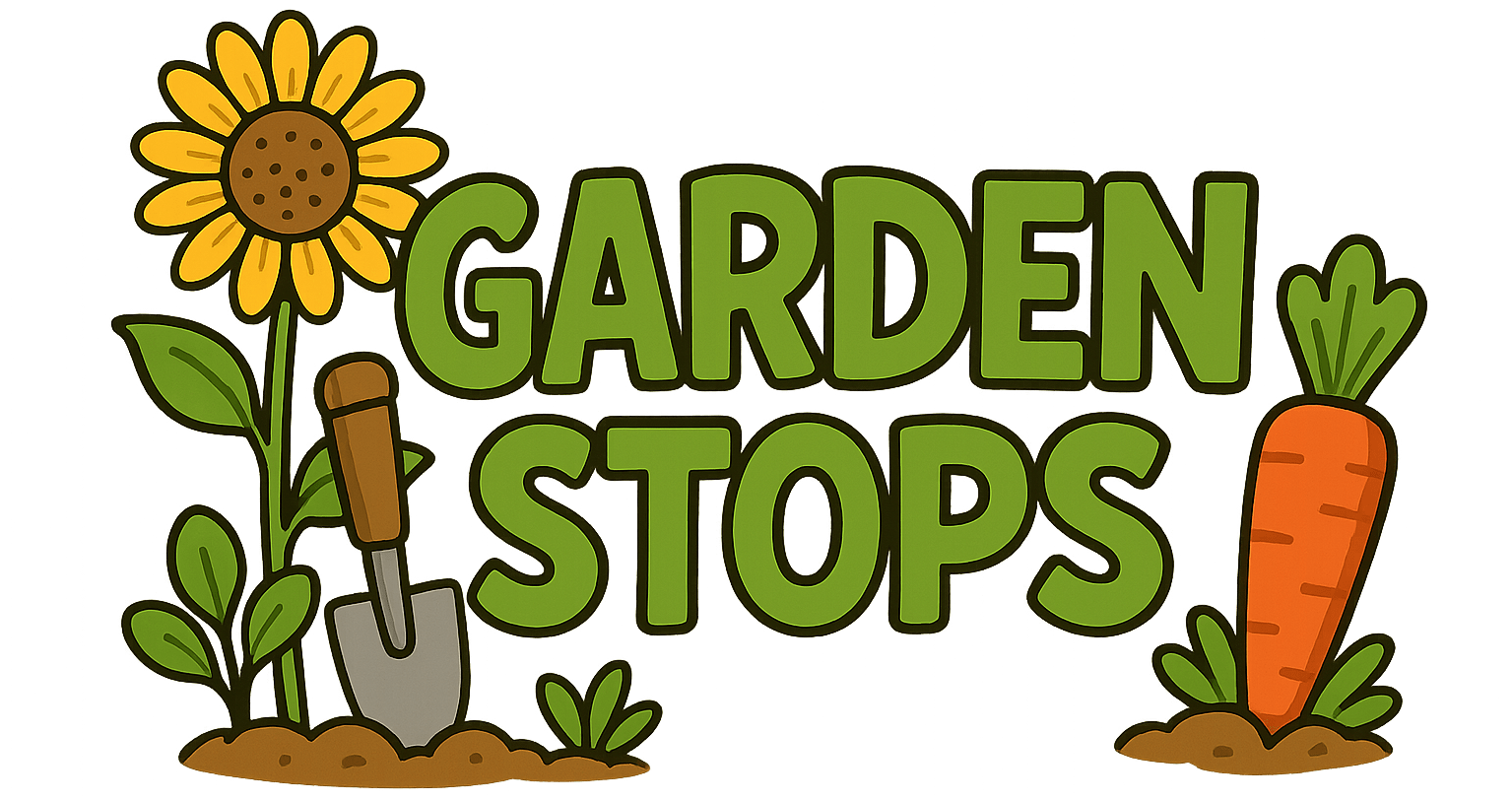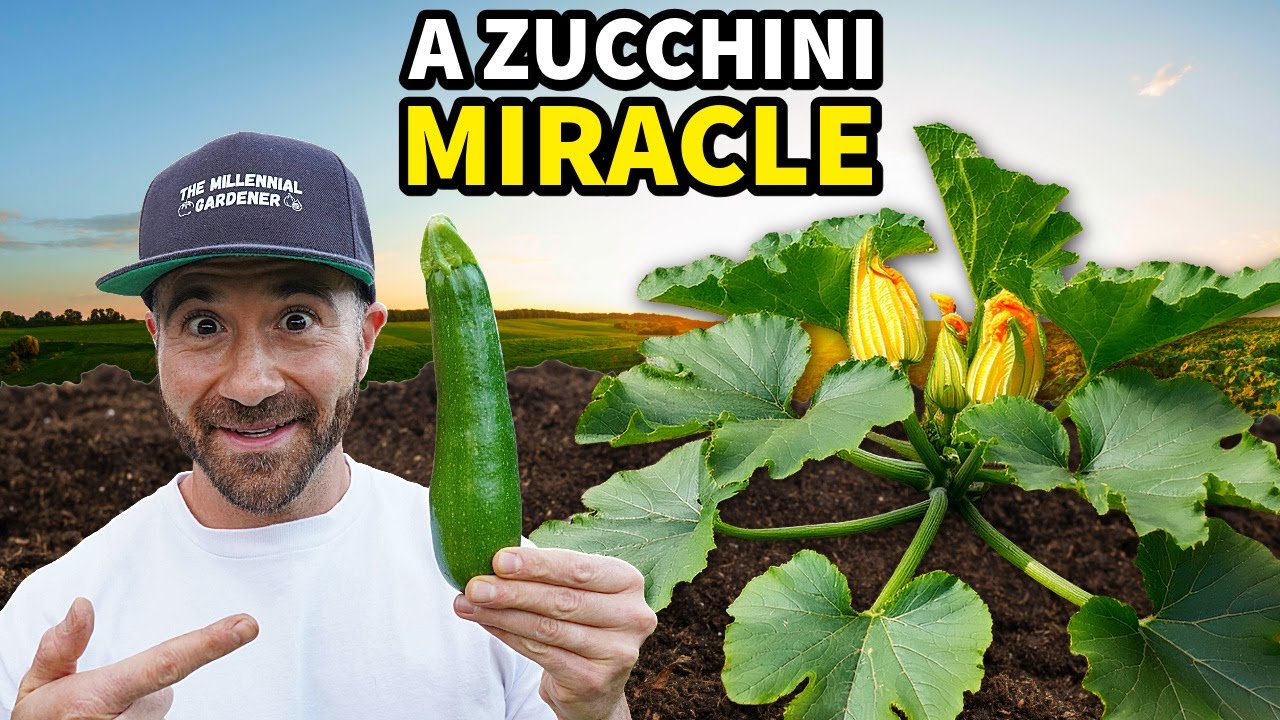Discover a groundbreaking method that will transform the way you grow zucchini. With this innovative approach, you’ll experience healthier plants, bigger yields, and a more enjoyable gardening journey. Get ready to elevate your zucchini game to a whole new level!
Introduction
Imagine a world where zucchini dreams come true—without the usual drama of bugs, vine borers, or the awkward dance of hand pollination. Just picture strolling into your backyard, plucking plump, glossy zucchinis fresh from disease-resistant vines that seem almost too good to be true. It’s like discovering a secret garden that was hiding in plain sight, one that promises bountiful harvests with less fuss and more enjoyment. Welcome to the future of gardening, a realm buoyed by innovations that turn traditional zucchini cultivation on its head, making it easier, cleaner, and downright rewarding.
This revolutionary approach isn’t just about growing zucchinis; it’s about revolutionizing your entire gardening experience. With a few clever tricks—such as pest-proof insect netting, parthenocarpic varieties, and organic pest control—you can achieve a hassle-free, high-yield harvest wrapped in eco-friendly practices. Whether you’re a seasoned green thumb or a tentative newbie, this game-changing method will have you rethinking what’s possible in your vegetable patch. Buckle up and prepare to be amazed; the garden of tomorrow is sprouting today.
Unlocking the Future: The Science Behind Pest-Resistant, Parthenocarpic Zucchini
Once upon a time, zucchinis were temperamental divas—prone to borers that sneakily burrow into stems and bugs that nibble away at tender leaves, turning what should be a lush paradise into a battlefield. But modern science has gifted us with a dazzling set of tools to turn these pest villains into mere whispers of a threat. Enter the disease-resistant zucchini vines, crafted from innovative hybrid strains that seem to laugh quite politely at disease and pest pressures alike. These vines are engineered to set fruit without the tender assistance of bees or other pollinators—what the garden world calls “parthenocarpy”—meaning you can harvest zucchinis even under insect netting, with no fuss, no muss.
The magic lies in the delicate yet resilient genetic makeup of these plants. They can thrive under insect netting—white or black—creating a virtual fortress that keeps away the notorious vine borers and pesky beetles. And with this, suddenly your garden becomes a sanctuary, protected and peaceful. The new method employs specific products like shade cloth and weed barriers that not only improve soil health and microclimate but also help the zucchinis grow lush and vigorous. No more wrestling with sticky traps or chasing rogue bugs in the twilight; instead, you have a system that works in harmony with nature, pushing productivity into overdrive while minimizing chemical treatments.
Furthermore, this approach to zucchini cultivation offers what many horticulturists are calling “garden independence.” By choosing parthenocarpic varieties, such as the popular Dunja zucchini seed available online, growers can enjoy organic, hassle-free harvests that set fruit reliably and abundantly. The result is a lush bounty bundled in a puzzle of clever pest control, organic feeding, and low-maintenance care. This isn’t just gardening; it’s gardening reimagined—more efficient, more sustainable, more satisfying.
Transforming Your Garden: Tools, Techniques, and Tips for Success
Getting your backyard into the zucchini revolution requires a few strategic moves—tools and techniques that seem simple but pack a punch when blended properly. First, invest in quality insect netting, whose white or black mesh creates an effective barrier against sneaky pests. Draping your plants with this netting is akin to whisking them away to a bug-free paradise, allowing fruit to set naturally without frequent intervention. Combine this with the use of shade cloth, especially during those scorching summer days, to keep plants cool and reduce stress, which often invites pests.
Next comes the magic of pruning—yes, snipping snips are your secret weapon. Judicious pruning keeps plants tidy and allows air to circulate freely, lowering humidity and thwarting fungal diseases. As you work, don’t forget to employ organic fertilizers like fish emulsion, PlantTone, and bone meal; they act as plant superfoods that bolster growth and resilience. Regular watering with a dedicated watering wand ensures the soil remains moist but not waterlogged, giving roots the perfect hug they crave.
Lastly, embracing these strategies isn’t just about pest control or good soil; it’s about embracing a holistic approach. Using organic pest controls like pyrethrin and spinosad, applied judiciously and with patience, can keep troublesome insects at bay without harming beneficial insects. Joining a community—asking questions, sharing your trials and triumphs—can turn your gardening journey into a lively exchange of hacks and insights. With the right tools and a little bit of know-how, your zucchini adventure is limited only by your imagination—and perhaps your backyard size.
The Art of Organic Pest Management and Plant Care
In the mystical realm of organic gardening, pest management isn’t a war but a dance, a carefully choreographed ballet of respect and simplicity. Protecting your zucchini plants with insect netting—be it the crisp white or sleek black variant—creates a nearly impenetrable barrier against the invading hordes. But beyond mere physical defenses, employing natural pest controls such as kaolin clay dustings and botanical sprays like pyrethrin and spinosad transforms your garden into an organic sanctuary. These gentle yet effective solutions keep pests at bay without turning your harvest into a chemical wasteland.
Meanwhile, the secret to thriving zucchini plants lies in soil nourishment and environmental harmony. Regular, effective watering—preferably with a high-quality watering wand—straight to the roots ensures consistent moisture without drowning plant tissues. Measurable and effective fertilization through organic sources like Fish Emulsion, Bone Meal, and compost-enriched PlantTone supplies essential nutrients, encouraging vigorous growth and abundant fruit set. These practices turn average beds into lush, productive havens, where each quivering zucchini on the vine feels like a small, green miracle.
To complete the picture, strategic use of shade cloth and weed barriers minimizes environmental stress, reducing the likelihood of disease and pest attraction. Carefully pruning and removing any unhealthy or damaged foliage not only enhances air circulation but also prevents potential infection. It’s a delicate balancing act: nurturing plants with organic care, shielding them from pests, and maintaining a thriving ecosystem within your garden. In this way, gardening becomes a meditative, sustainable act—one that yields plentiful, pesticide-free zucchinis and an abiding sense of well-being.
Harvesting and Maintaining Your Bounty
Harvesting zucchinis under this innovative system is akin to catching a wave—timing is everything, and patience makes it sweeter. With disease-resistant, parthenocarpic vines, you may be surprised how early and often your zucchinis are ready for picking. The key is watching for those perfect, glossy fruits that feel firm yet tender—bite-size zucchinis that are an ideal blend of flavor and texture. Rather than waiting for them to reach monster proportions, snip them when they’re just right; doing so encourages the plant to produce more fruit, transforming your garden into a relentless zucchini fountain.
As your zucchinis mature, regular pruning and removal of excess produce can help maintain plant vigor. Using pruning snips, you can delicately snip off any overgrown or damaged stems, making room for new growth. Remember, the goal isn’t just a bumper harvest but a sustainable one—respect the plant’s rhythm, and it will reward you with a continuous flow of fresh zucchinis. Keep an eye out for signs of pests or disease, even with your fortress of insect netting and organic treatments, because vigilance remains your best defense.
Once the harvest begins in earnest, consider ways to store and enjoy your bounty—freezing slices, pickling them into zesty relishes, or simply savoring their fresh, grassy flavor in a summer salad. And don’t forget: each zucchini picked from your upgraded garden is a tiny victory, a testament to your patience, your clever use of technology, and your respect for nature’s delicate balance. With this method, zucchini harvests become a celebration of gardening ingenuity and sustainable joy.
Frequently Asked Questions
What are the main benefits of using insect netting on zucchini plants?
Insect netting acts as an invisible shield, dramatically reducing pest infestation by physically blocking bugs like vine borers, beetles, and aphids from reaching your plants. It allows your zucchinis to set fruit naturally, even under insect pressure, eliminating the need for chemical sprays or frequent manual pest removal. Moreover, netting creates an microclimate that can suppress fungal diseases and keeps fruit cleaner, leading to healthier, more pristine harvests. Best of all, it simplifies management, making gardening less of a chore and more of a pleasure.
How does parthenocarpic zucchini differ from traditional varieties?
Parthenocarpic zucchinis are essentially the “independent women” of the vegetable world—they don’t need pollination to produce fruit. Unlike traditional zucchinis that rely on bees or other pollinators to trigger fruit development, these plants set zucchinis without any help, even under insect netting or in greenhouses. This makes them perfect for small gardens or urban settings, where pollinator activity might be sparse or inconsistent. They are high-yield, hassle-free, and quite possibly the future of organic zucchini gardening.
What organic pest control methods work best with this new zucchini growing approach?
The triumvirate of organic pest control—kaolin clay, pyrethrin, and spinosad—works synergistically when combined with physical barriers like insect netting. Kaolin clay creates a protective film over plants that confuses pests and discourages feeding. Pyrethrin, derived from chrysanthemums, offers quick knockdowns of insect populations, while spinosad provides long-lasting control against larvae and beetles. Applying these organic solutions judiciously keeps pests at bay without harming beneficial insects, supporting the overall health of your garden ecosystem.
What tools are essential for maintaining high yields and plant health?
Investing in quality pruning snips, a sturdy watering wand, organic fertilizers, and durable insect netting is fundamental. Pruning snips allow for precise, damage-free removal of dead or overgrown foliage, enhancing airflow and reducing disease. A watering wand ensures deep, even watering, which is crucial for vigorous growth and fruit development. Combining this with organic fertilizers like Fish Emulsion, Bone Meal, and PlantTone supplies essential nutrients, resulting in healthy, productive plants. These tools, paired with environmental protections like shade cloth and weed barriers, form the backbone of a successful zucchini garden.
Can I start this method with any zucchini variety?
While many varieties can adapt to this innovative approach, the Dunja zucchini seed stands out as an excellent choice. Known for high yields, disease resistance, and adaptability to organic practices, Dunja is available online and makes an ideal starting point. To maximize success, choose seed strains labeled as parthenocarpic or highly disease-resistant, and always follow specific planting and care instructions for best results. This tailored approach ensures your garden not only survives but thrives, turning zucchini cultivation into an effortless and rewarding endeavor.
Final Thoughts
Stepping into this new era of zucchini gardening feels a little like discovering a hidden cheat code—one that promises abundant, pest-free harvests with minimal effort. It’s a dance of science, intuition, and a touch of rebellion against the old, labor-intensive methods that once made zucchinis seem more like a chore than a delight. With strategic use of insect netting, organic pest control, and disease-resistant vines, what was once a challenge has transformed into a playful, almost carefree pursuit.
Gardening is ultimately about connection—connecting with the earth, with your plants, and with the timeless rhythm of growth and renewal. This innovative method enhances that connection, giving gardeners the tools to nurture with confidence and ease. As you embrace these practices, remember that each zucchini you harvest is not just a vegetable; it’s a small, tangible victory—a testament to modern ingenuity and patience. So go ahead, plant your seeds, shield them with care, and prepare for a zucchini season that’s more about joy than struggle. The future of gardening has arrived; all that’s left is for you to step into it.

